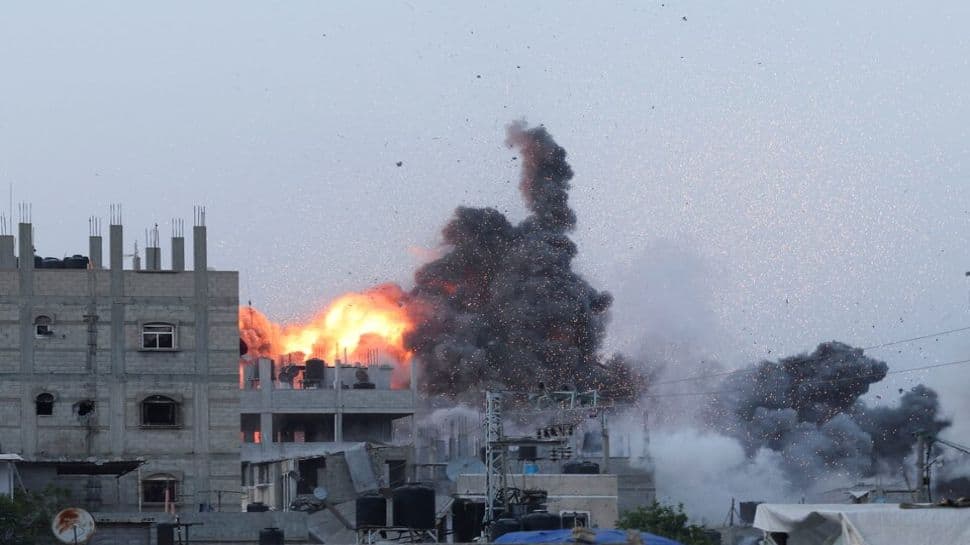The fragile ceasefire intended to end the devastating two-year conflict between Israel and Gaza now teeters on the brink of collapse. Despite hopes that the truce would bring peace and relief to the war-torn region, recent events have exposed the deep fragility of the agreement, with violence and humanitarian crises continuing unabated.
Since the ceasefire was initiated on October 10, following extensive negotiations led by the United States and mediated by Qatar, Egypt, and Turkey, the promised peace has remained elusive. Israel has reportedly killed nearly 100 Palestinians and wounded around 230 in Gaza during this period, according to Gaza’s Government Media Office. These incidents include Israeli troops opening fire on unarmed civilians and renewed airstrikes across the region, with the most recent wave occurring on a Sunday, escalating fears that the ceasefire is unraveling.
The Israeli Defense Forces (IDF) justified their actions by claiming that Hamas fighters attacked Israeli soldiers in the Rafah border area, which is under Israeli control. According to Israeli reports, two Hamas militants killed two Israeli soldiers, prompting a massive retaliation of airstrikes across Gaza. However, Hamas’s military wing, the Qassam Brigades, denied any such clashes, asserting that Rafah remains fully under Israeli control and no Palestinian fighters were present or active there. This conflicting narrative underscores the deep mistrust between the two sides and complicates efforts to maintain peace.
The humanitarian situation in Gaza remains dire. The Rafah crossing, a critical point for aid and civilian movement, remains sealed by Israel, severely restricting the entry of much-needed humanitarian supplies. The United Nations has reported that Israel has agreed to allow only 300 aid trucks into Gaza, half the number originally stipulated in the ceasefire agreement. With food scarce and clean water in short supply, the people of Gaza face a worsening crisis amid ongoing conflict and blockade.
The war has left Gaza devastated, with entire neighborhoods reduced to rubble and thousands of bodies trapped beneath collapsed buildings. Officials estimate that more than 10,000 Palestinians remain buried under the debris. The search and recovery of bodies have been slow and painstaking, hindered by the lack of equipment and ongoing hostilities. Israel accuses Hamas of withholding the bodies of 28 captives killed in earlier bombings, while Hamas insists that it requires digging machinery and external assistance to retrieve these remains buried beneath the ruins.
The ceasefire agreement itself was part of a comprehensive 20-point plan introduced by then-US President Donald Trump in late September. It aimed to halt all hostilities and establish a framework for rebuilding Gaza. Under the plan, Israel was to lift its blockade, allowing unrestricted humanitarian aid, while Hamas was expected to release all captives, both alive and deceased. Israel was also to free approximately 2,000 Palestinian prisoners and individuals who had disappeared while in custody.
An important component of the ceasefire was the political restructuring of Gaza's governance. Hamas was to step down from its administrative role, to be replaced by a technocratic administration, with Israeli forces withdrawing in phases. The plan also called for the disarmament of Hamas, offering amnesty to some fighters and safe passage to others willing to leave. Hamas agreed to release captives and accept an independent Palestinian administration in Gaza but emphasized that future political arrangements should be handled within an inclusive Palestinian national framework, in which they would remain actively involved.
Despite these agreements, violations have persisted. The Government Media Office in Gaza reports that Israel has breached the ceasefire 80 times, resulting in the deaths of 97 Palestinians during these incidents. One tragic example occurred in the Zeitoun neighborhood, where Israeli forces fired on a civilian vehicle carrying the Abu Shaaban family, killing eleven members, including seven children and three women, all on their way home. Additional air raids on Sunday killed dozens more across Gaza.
On another occasion, Israel stated it was honoring the truce, only to later launch an attack in northern Gaza’s Shujayea area, killing several Palestinians. Israeli officials claimed these individuals posed a threat after allegedly crossing a "yellow line," a poorly defined border established by the Israeli military. This yellow line has become a symbol of fear for Gazans, running through open fields and ruins, with anyone crossing it risking being shot. The lack of clear demarcation exacerbates the anxiety and uncertainty for residents trying to rebuild their lives.
Meanwhile, Hamas has taken steps consistent with the ceasefire obligations, releasing all 20 living captives and returning 12 of the 28 deceased

